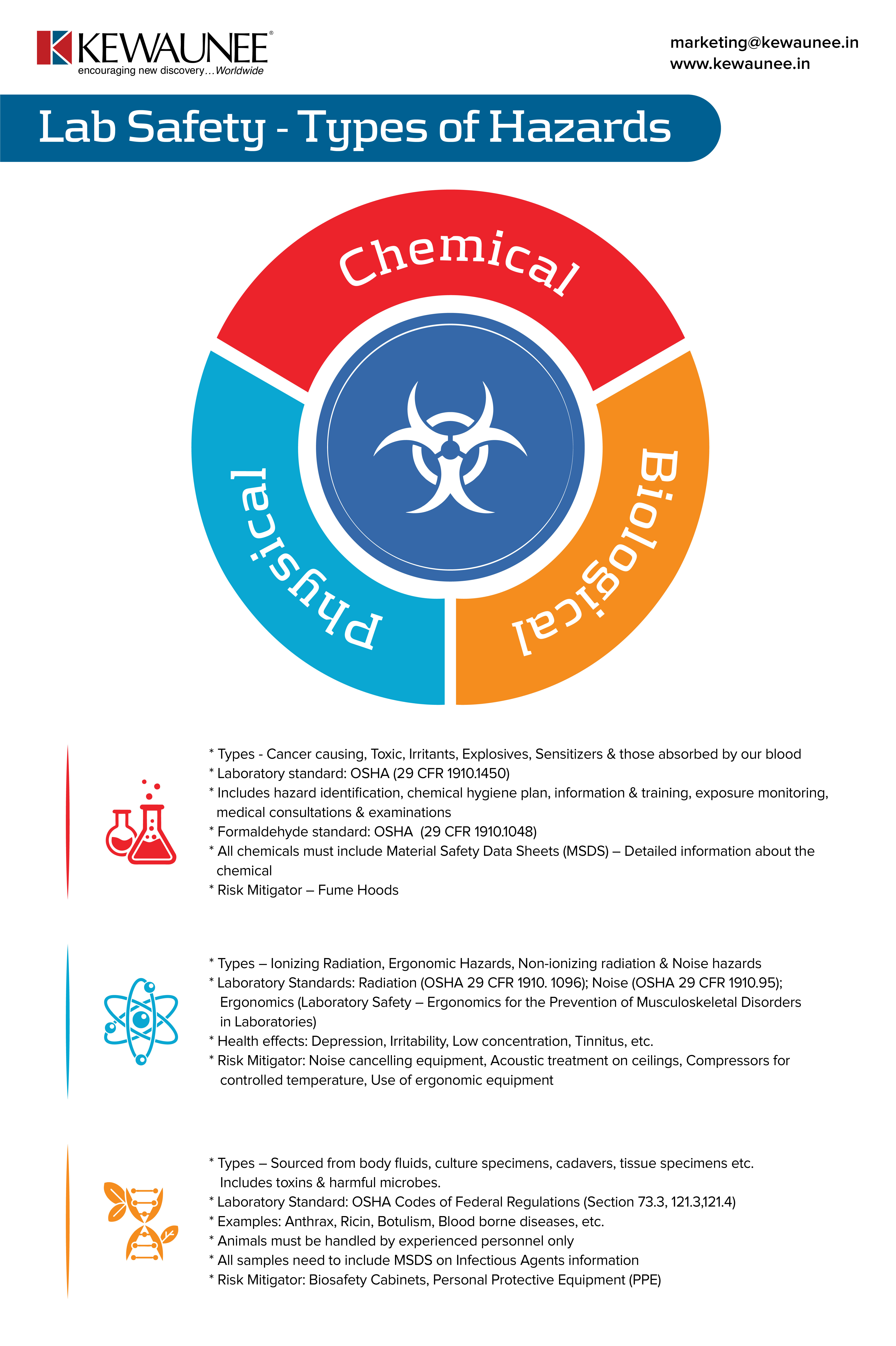Lab Safety – Types of Hazards
Any laboratory personnel would know the number of ways in which they can injure themselves or others. It’s one reason why it’s a key component in the laboratory design and construction process. The Occupational Safety & Health Administration (OSHA) has published one of the most comprehensive and detailed safety regulations on this subject.
The infographic below discusses the various kinds of hazards that we can observe in the laboratory, what they can do to us and what is used to mitigate them.
| Types of Hazards |
Information |
| Chemical |
- Types – Cancer causing, Toxic, Irritants, Explosives, Sensitizers & those absorbed by our blood
- Laboratory standard: OSHA (29 CFR 1910.1450)
- Includes hazard identification, chemical hygiene plan, information & training, exposure monitoring, medical consultations & examinations
- Formaldehyde standard: OSHA (29 CFR 1910.1048)
- All chemicals must include Material Safety Data Sheets (MSDS) – Detailed information about the chemical
- Risk Mitigator – Fume Hoods
|
| Biological |
- Types – Sourced from body fluids, culture specimens, cadavers, tissue specimens etc. Includes toxins & harmful microbes.
- Laboratory Standard: OSHA Codes of Federal Regulations (Section 73.3, 121.3,121.4)
- Examples: Anthrax, Ricin, Botulism, Blood borne diseases, etc.
- Animals must be handled by experienced personnel only
- All samples need to include MSDS on Infectious Agents information
- Risk Mitigator: Biosafety Cabinets, Personal Protective Equipment (PPE)
|
| Physical |
- Types – Ionizing Radiation, Ergonomic Hazards, Non-ionizing radiation & Noise hazards
- Laboratory Standards: Radiation (OSHA 29 CFR 1910. 1096); Noise (OSHA 29 CFR 1910.95); Ergonomics (Laboratory Safety – Ergonomics for the Prevention of Musculoskeletal Disorders in Laboratories)
- Health effects: Depression, Irritability, Low concentration, Tinnitus, etc.
- Risk Mitigator: Noise cancelling equipment, Acoustic treatment on ceilings, Compressors for controlled temperature, Use of ergonomic equipment
|
Source: Laboratory Safety Guidance (OSHA), 2011
Kewaunee, the global leader in total laboratory solutions, empowers organisations to achieve competitive advantage through safe, efficient, and contemporary laboratories. In existence since 1906, Kewaunee powers the laboratories for over 5,000 customers in more than 100 countries.











